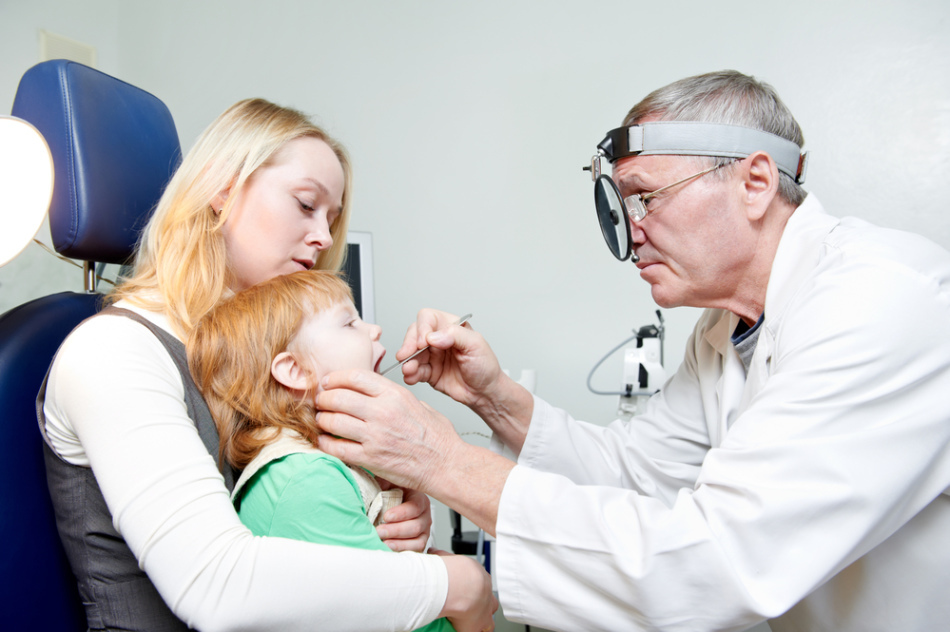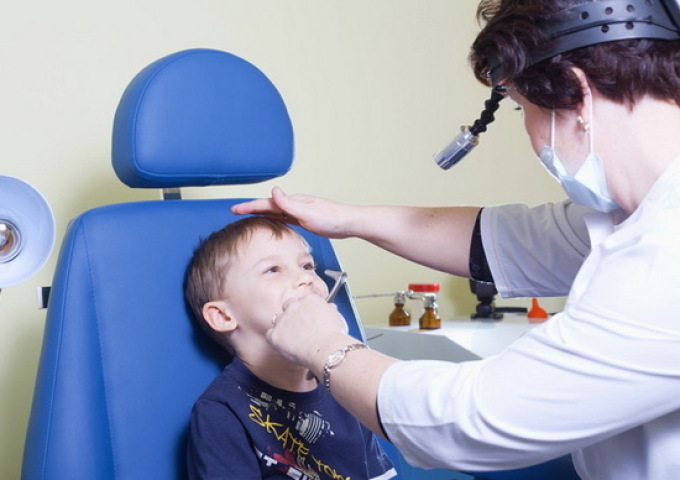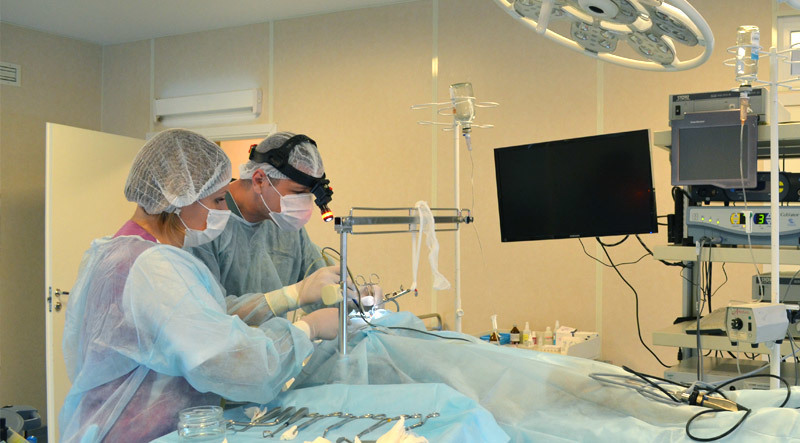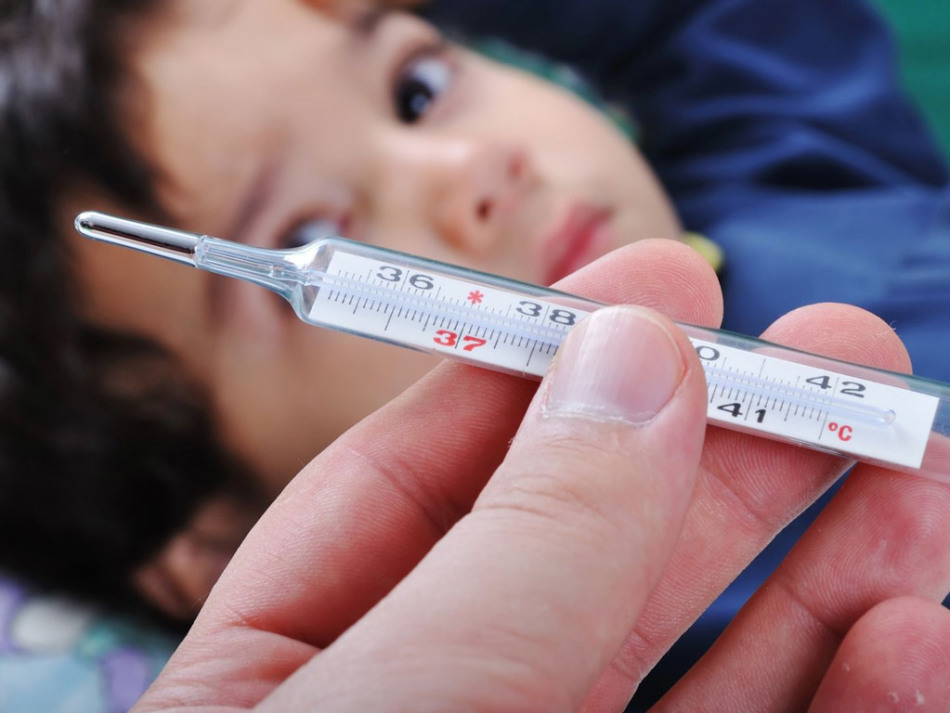Removal of glands and adenoids helps to save the child from night snoring, apnea, otitis, permanent nasal congestion and throat diseases. The operation can be performed both under general and under local anesthesia.
Contents
- Indications for the removal of glands and adenoids
- Adenoids of the 1st degree in the child
- Adenoids of the 2nd degree in the child
- Adenoids of the 3rd degree in the child
- Enlarged adenoids in the child. Hypertrophy of adenoids in children
- Symptoms of enlarged adenoids in a child
- Symptoms of inflammation of adenoids in children
- How are adenoids removed in children?
- Removal of adenoids in children with laser
- Postoperative period after removal of glands and adenoids in children
- What if the fever has gone up after removal of adenoids in children?
- Effects of removal of tonsils, tonsils and adenoids
- Removal of tonsils, glands and adenoids: advice and feedback
- Video: Do I need to remove adenoids for children?
In the distant past there have been operations to remove glands and adenoids "live", performed under the frightened screams of operated, without any anesthesia. Modern adenotomy and tonsillotomy are safe effective surgical manipulations, which make it possible to greatly facilitate the life of the child.

Indications for the removal of glands and adenoids
The main indication for the removal of glands and adenoids is their chronic hypertrophy. Children with excessively enlarged glands and adenoids suffer from frequent respiratory-viral diseases, nasal congestion, chronic rhinitis, throat and otitis diseases. Adenotomy is also performed in case of deterioration of hearing and congestion of fluid in the ears.

IMPORTANT: The body of a child with hypertrophied tonsils lacks air, which simply can not enter the required quantity. The kid tries to get more oxygen, so he breathes through his mouth. Such breathing is very dangerous, as it can provoke the development of laryngitis, tonsillitis, pneumonia and a number of other serious diseases.
The portrait of a child who has an operation for removing tonsils is very sad: open mouth, pale skin, oblong puffy face, lack of emotionality, lean facial expression, narrow upper jaw, curved upper teeth. This type of person is called adenoid. Half of the children resembling the described portrait experience a delay in mental development, which appears due to a deficiency of oxygen in the brain.
IMPORTANT: The operation to remove tonsils is carried out at any age. Typically, doctors prescribe adenotomy and tonsillotomy if conservative treatment has not yielded positive results.
Adenoids of the 1st degree in the child
Adenoids of the 1st degree are characterized by a slight overgrowth. At this stage, adenoids grow only a third of the possible volume and still allow air to freely enter the body. The holes through which the nose communicates with the pharynx are closed less than half. This allows the child to breathe normally during the day and only during a night's sleep there is snoring or noisy breathing. The child sleeps with a slightly opened mouth.

IMPORTANT: Adenoids of the 1st degree do not require surgical treatment except when they cause hearing problems.
Adenoids of the 2nd degree in the child
The second degree of adenoids proliferation is said when the baby has predominantly oral breathing, and nasal breathing is very difficult. At night, the baby snores much, sometimes there are attacks of apnea with long breath-holdings. Adenoids of the 2nd degree cover the openings that let in air, more than half. Detect the disease parents can independently, and confirm their suspicions should the doctor-otolaryngologist.

IMPORTANT: Adenoids of the 2nd degree can be tried with medication. To reduce them, doctors prescribe hormonal and homeopathic remedies. If the treatment has not yielded positive results, the adenoids are removed.
Adenoids of the 3rd degree in the child
Adenoids of 3 degrees are characterized by the maximum possible growth of lymphoid tissues. They completely cover the openings through which air must flow. Symptoms in adenoids of the third degree are much more pronounced than in adenoids of the 2nd degree.
IMPORTANT: Adenoids of grade 3 are not treated conservatively, but are removed by surgery.

Enlarged adenoids in a child. Hypertrophy of adenoids in children
Increased adenoids in most cases are a consequence of frequent colds. Adenoids and glands together play the role of the so-called protective barrier in the child's body. During the disease, the tonsils increase in size to more effectively repel virus attacks.
If the child continually picks up new infections, the tonsils simply do not have time to return to normal. Increasing with each disease more and more, adenoids grow so much that they themselves become a hotbed of infections.
Symptoms of enlarged adenoids in a child
Symptoms of hypertrophied palatine tonsils in a child include:
- chronic or frequent runny nose
- snoring, apnea
- shortness of nasal breathing
- slightly open mouth
- nasal voice
- hearing impairment
- restless sleep
- adenoid face type
- frequent coldsDisease

IMPORTANT: If the child has a delay in breathing in sleep, severe hearing impairment or pain in the ears should immediately contact a child's ENT.
Symptoms of inflammation of adenoids in children
Adenoids in children can be inflamed periodically or permanently in an inflamed condition. At the same time, the body temperature can vary from 37.5 to 39.5 ° C.The child complains of a burning sensation in the nasopharynx, a strong nasal congestion. Sometimes, to common symptoms, pain in the ears, fatigue, loss of appetite is added.

Night sleep is often interrupted by attacks of severe cough, while mucus and pus from the nasopharynx enters the respiratory tract.
IMPORTANT: Against the background of inflamed adenoids, an allergy may develop in a short time.
How do they remove adenoids in children?
Removal of adenoids is the most common surgical operation in preschool and primary school children. It can be carried out as under local ( traditional adenotomy) and under for general ( endoscopic adenotomy) with anesthesia.
For the of traditional adenotomy , a doctor drips a solution of lidocaine or other analgesic in the baby's nose. The child is seated on an armchair and tightly fix his arms and legs. The doctor quickly cuts the adenoids with a special tool, but he acts at random because of the inability to see the operative zone.
The advantage of adenotomy under local anesthesia is the minimum time spent on the operation and the elimination of risks associated with the introduction of general anesthesia.

However, the method has significant drawbacks, among which:
- child fright from the blood type
- severe impairment of the child's psyche
- risk of damage to the teeth or soft tissues of the nasopharynx during surgery
- probability of recurrence of the disease due to incomplete removal of adenoids
IMPORTANT: Adenoid tissue does not have nerveterminations, therefore the child will not feel pain even without anesthesia.
Endoscopic adenotomy under general anesthesia guarantees complete removal of adenoid outgrowths and enables the surgeon to perform his work qualitatively.
IMPORTANT: For surgery under general anesthesia, it is necessary to prepare and undergo a series of examinations. A few days before the operation, the anesthetist is provided with the results of a general analysis of blood and urine, an analysis for clotting of blood, an ECG of the child. You also need to get permission for an operation from a pediatrician and a children's dentist.
General anesthesia provides complete loss of consciousness and insensitivity to the manipulation of the doctor. In order to maintain the flow of air through the respiratory tract use an intubation tube or mask.
Endoscopy allows you to stop bleeding in time, treat the operated area with a laser. In order to cut out the enlarged lymphoid tissue, the surgeon uses a circular scalpel or microdeveloper - a shaver instrument that is inserted into the nasal cavity to the nasopharynx and starts to work.
IMPORTANT: Excision of the tonsils is fast, the total operation time usually does not exceed 20 - 25 minutes.
The child departs from anesthesia under the supervision of an anesthesiologist for about 30 to 40 minutes. Then the baby is transferred to the ward to his mother. There he rest for several hours or sleeps. The doctor assesses the condition of the child, examines it and, in most cases, lets go home.

Adenoid removal in children with laser
Laser adenotomy is performed to remove adenoids of small size. The essence of the procedure is that instead of a scalpel in the hands of a surgeon there is a laser, with the beam of which necessary manipulations are carried out.
The removal of adenoids by laser can be coagulation or valorization. In the first case, the sprouting is removed immediately completely, and in the second - layerwise.
Advantages of the laser adenotomy method include:
- rapid painless recovery after surgery
- minimal tissue trauma
- good quality of work
- low probability of recurrence
The disadvantage of this type of adenotomy is low efficiency in large adenoid outgrowths.

Postoperative period after removal of glands and adenoids in children
The postoperative period primarily depends on the type of operation performed and on the characteristics of the child's body. If an adenotomy was performed under local anesthesia, the postoperative period, in which medical support and supervision is required, is several hours.
When performing an operation under general anesthesia, the child departs from anesthesia and is under medical supervision until the evening. If there are no complaints and complications, then on the same day a small patient is released home.
IMPORTANT: The only unpleasant postoperative moment is the high likelihood of the baby leaving bloody mucus from the mouth or nose.
It is advisable to keep the home regime from 2 weeks to a month, despite the fact that the child's condition is fully normalized already on the third - the fourth day. To avoid children's groups for such a long time is necessary to give the children's immunity fully recover.
A few weeks after the operation, the baby is restricted in physical activity and fed mainly by grinded diet food.

IMPORTANT: After surgery, slight increase in body temperature, weakness, lethargy and sore throat may occur. But all these symptoms disappear after a few days, and the child continues to live a normal life.
What should I do if the temperature rises after adenoids have been removed from children?
A slight increase in body temperature after surgery( usually from 36.8 to 37.8 ° C) is considered normal. Increase in temperature above 38 ° C should be reported immediately to the doctor who performed the operation. He will examine the child, determine the cause of the heat and prescribe the necessary treatment.

In no case can the temperature be knocked down with drugs containing aspirin. This drug greatly changes the structure of the blood, diluting it. After offering a child a pill of aspirin, you can provoke the appearance of severe bleeding. Nurofen( ibuprofen) is used to normalize body temperature and eliminate pain.
IMPORTANT: Treatment of diseases that occurred during the postoperative period and accompanied by an increase in body temperature should only be carried out under the supervision of a physician.
Effects of removal of tonsils, tonsils and adenoids
Consequences of the removal of glands and adenoids are more likely to be positive than negative. The child begins to breathe well with his nose, as soon as the edema subsides, night snoring ceases, apnea recedes. After a few weeks, the nasal voice disappears from the voice.
Reduces the number of colds, and those that the child still sick, go quickly and without complications. Otitis and sore throats come to an end. The child visits children's groups without risk of "catching" another infection in a short time.

It is possible to speak about the appearance of negative consequences of the operation in a two-week postoperative period. At this time, an increase in body temperature, pain and discomfort in the throat, rapid fatigue. If the operation was performed under local anesthesia, and the child is very frightened, he may awake for a while at night and cry.
Removal of tonsils, tonsils and adenoids: advice and feedback
Barbara: Last week my daughter( 4,5 years) removed adenoids and part of the glands. The operation was under general anesthesia. It all started with the fact that my daughter began to deteriorate hearing. When we got to the reception to LOR, I was dumbfounded. According to the results of the audiogram, he determined that the hearing decreases because of the constant presence of water in the ears. If you do not perform an urgent surgery to remove adenoids, the situation may worsen until you completely lose your hearing. In addition, after suffering angina in 2 years, the daughter's glands increased greatly and remained so forever. They almost completely blocked the lumen in the throat. The doctor decided to also carry out a partial tonsilotomy. The operation was quick and without complications. Anesthesiologist brought a daughter to the ward and told about the peculiarities of anesthesia. My daughter just slept for several hours, then woke up and asked for a drink. While she was withdrawing from anesthesia, an anesthesiologist and a doctor who was carrying out the operation looked into the ward every now and then. They fully controlled the child's condition and made recommendations. In the evening they let us go home. Already on the first night after the operation, my daughter breathed very quietly in her sleep. I was even scared. I listened to her breathing all the time. For several days after the operation, on the recommendation of the doctor, I gave Nurofen syrup to my daughter for anesthesia. The temperature at that time increased slightly, to 37.5 ° C.I very much hope that after this operation my daughter will cease to be ill as often as it was before.
Marina: At the age of 5 my daughter spoke very badly. Despite the fact that she constantly chattered, it was almost impossible to make out the words. On the advice of a friend, I turned to LOR, who explained to me that we had problems with speech because of the proliferation of adenoids. The doctor recommended an adenotomy. We passed the necessary tests and went to surgery. Anesthesia was common. I immediately worried about this, but later never regretted the decision to do the operation under general anesthesia. My daughter did not even understand where she was and what was happening to her. The postoperative period passed easily and quickly. I did not notice any negative consequences of anesthesia.
Katya: The adenoid son was removed under local anesthesia at 9 years old. Before that he often had colds and snored much at night. Operation uncomplicated, after 2 hours we were allowed to go home. The son did not cry, although he understood well where and why we are going. After the operation, the permanent stuffiness of the nose disappeared, the son ceased to hurt. I'm very glad that we did the operation after all. I regret only that I did not dare to do this before.
Removing tonsils is a simple surgical procedure that is performed for every fourth child. Do not avoid removing adenoids or glands, if they significantly impair the health of the child. Only by saving the baby from persistent colds, colds and otitis, and parents and child can finally breathe peacefully.
